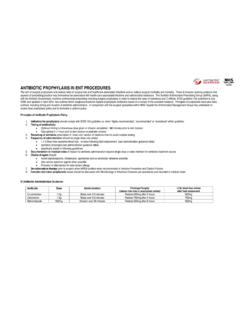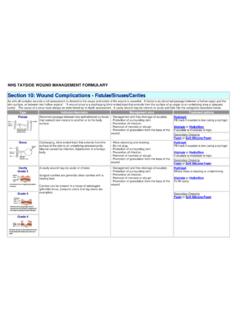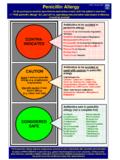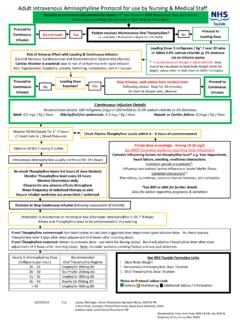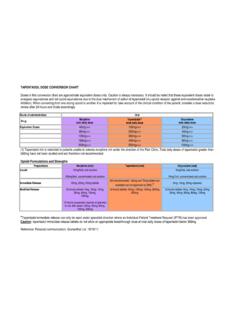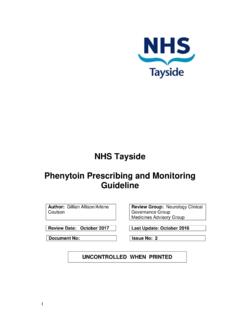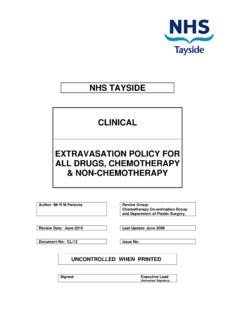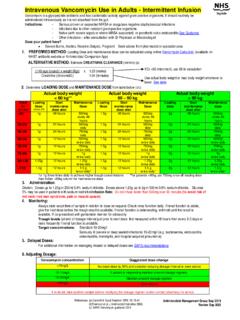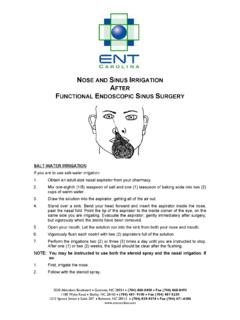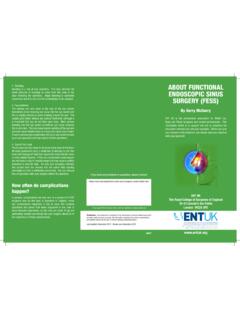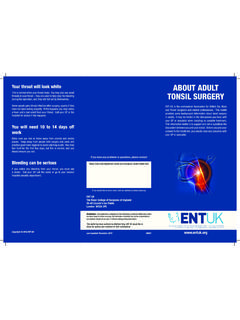Transcription of ANTIBIOTIC PROPHYLAXIS IN SURGERY
1 ANTIBIOTIC PROPHYLAXIS IN ENT PROCEDURES The aim of surgical PROPHYLAXIS is to reduce rates of surgical site and healthcare-associated infections and so reduce surgical morbidity and mortality. There is however growing evidence that aspects of prescribing practice may themselves be associated with health-care associated infections and antimicrobial resistance. The Scottish Antimicrobial Prescribing Group (SAPG), along with the Scottish Government, monitors antimicrobial prescribing including surgical PROPHYLAXIS in order to reduce the rates of resistance and SIGN guideline 104 published in July 2008, and updated in April 2014, has outlined which surgical procedures require prophylactic antibiotics based on a review of the available evidence.
2 Principles of PROPHYLAXIS have also been outlined, including timing and duration of ANTIBIOTIC administration. In conjunction with the surgical specialties within NHS Tayside the Antimicrobial Management Group has undertaken to review local PROPHYLAXIS policy and to formulate a uniform policy. Principles of ANTIBIOTIC PROPHYLAXIS Policy 1. Indication for PROPHYLAXIS should comply with SIGN 104 guideline when highly recommended , recommended or considered within guideline. 2. Timing of ANTIBIOTIC (s): Optimum timing is intravenous dose given or infusion completed 60 minutes prior to skin incision Sub-optimal if >1 hour prior to skin incision or post-skin incision 3.
3 Recording of ANTIBIOTIC prescription in once only section of medicine chart to avoid multiple dosing 4. Frequency of administration should be single dose only unless: > litres intra-operative blood loss - re-dose following fluid replacement (see administration guidance table) operation prolonged (see administration guidance table) specifically stated in following guidelines 5. Documentation in medical notes of reason for ANTIBIOTIC administration beyond single dose or state intention for ANTIBIOTIC treatment course 6.
4 Choice of agent should: Avoid cephalosporins, clindamycin, quinolones and co-amoxiclav wherever possible Use narrow spectrum agents when possible Provision of alternatives for beta-lactam allergy 7. De-colonisation therapy prior to SURGERY when MRSA positive when recommended in Infection Prevention and Control Policies 8. Complex individual PROPHYLAXIS issues should be discussed with Microbiology or Infectious Diseases pre-operatively and recorded in medical notes IV ANTIBIOTIC Administration Guidance: ANTIBIOTIC Dose Administration Prolonged SURGERY (redose from time of PROPHYLAXIS started) > blood loss redose after fluid replacement Co-amoxiclav Bolus over 3-5 minutes Redose 600mg after 4 hours 600mg Cefuroxime Bolus over 3-5 minutes Redose 750mg after 4 hours 750mg Metronidazole 500mg Infusion over 20 minutes Redose 500mg after 8 hours 500mg HEAD and NECK Procedure SIGN 104 Recommendation ANTIBIOTIC (s)
5 Comments Clean, Benign tonsillectomy, adenoidectomy, ear SURGERY , routine nose, sinus and endoscopic sinus SURGERY Not Recommended Clean, Malignant neck dissection Consider PROPHYLAXIS No PROPHYLAXIS used locally Contaminated, Clean contaminated laryngectomy, complex septorhinoplasty Recommended Not >24 hours, ensure broad spectrum aerobic + anaerobic cover provided Co-amoxiclav IV for 3 doses Penilcillin allergy: IV cefuroxime 750mg - + metronidazole 500mg for 3 doses Grommet Insertion Recommended Ciprofloxacin eye drops (off label use) Single topical dose after grommets inserted.
6 Developed by: ENT/AMG 2013 Approved by: AMG August 2013 Updated: June 2018 Review: June 2020 References: 1. SIGN 104 ANTIBIOTIC PROPHYLAXIS in SURGERY . July 2008
